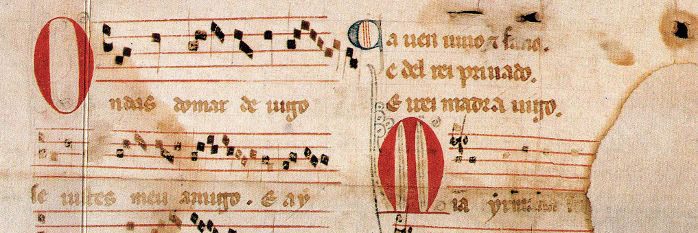
Since ancient times, there have been are historians, chroniclers and poets who have talked about the lifestyles of the earliest known inhabitants of this territory, the Kallaikoi. The cultural identity of modern Galicia is based on those earliest known prehistoric cultures that shaped the history of the peninsular northwest. Megalithic monuments and settlements which welcomed the development of the so-called Celtic culture in the Iron Age ―full of uncertainties for historians today― are still part of our landscape.
It was the Roman rule from the 2nd century BC that marked gradually the beginning of a new stage of which many vestiges are preserved. During Romanisation complex engineering works and infrastructure were built, such as roads, lighthouses and defence structures. They are a part of our preserved heritage, as are the walls of Lugo, a culture of river use, and new forms of farming and mining. They were also the base for the emerging Galician language, which retained words of the old settlers.
With the beginning of the Middle Ages, several highly relevant facts occurred in Galician culture. The discovery of the tomb of the Apostle Santiago in the 9th century initiated the emergence of a cultural exchange through pilgrimage to Santiago de Compostela. This town became the heart of Europe with archbishop Xelmírez. Scientific knowledge and the Romanesque style that marked the artistic production of the time spread through these routes. Also in the literary and linguistic range, Galician culture had its first golden age in the Middle Ages with the lyric work by authors like Airas Nunez, Mendiño, Martín Códax or Afonso X the Wise.
This rich production and consideration of literature and language began to be relegated from the 15th century with the beginning of the decline of the influence of the Galician nobility and the forced closure of many monastic schools during the 17th century. The oral literary creation and popular cultural experience kept their wealth during the following centuries. And although there was a shortage of literary and scientific texts during the Renaissance in Galicia, artistic creation in other areas such as architecture and music was on par with what was produced in other territories of the Iberian Peninsula. Also, the University of Santiago was founded in the 16th century, and in the 17th there was a significant intellectual development in monasteries led by European-level intellectual enlightened people such as Friar Martín Sarmiento or Father Feijoo. A new artistic explosion in Baroque plastic art and architecture, with teachers such as Domingos de Andrade or Casas Novoa, also took place and proliferated at that time in both towns and villages.
Despite the demographic crisis and major migration to the centre and south of the Peninsula and Latin America, Galicia enters Romanticism in the 19th century and Galician literature experiences a resurgence with authors like Rosalía de Castro, Curros Enríquez and Eduardo Pondal, whose work transcended generations and countries and constitutes the main influence to all subsequent creation in Galicia. Excellent composers like Xoán Montes, Chané or Pascual Veiga often used their verses as an inspiration.
In the early 20th century Galician culture was already encouraged by pro-Galician movements. These actions were dashed by the 1936 coup that plunged Galician culture in a difficult time during the forty years of Franco's dictatorship. However, as early as 1949 a new literary generation gradually gained ground, and from the 60's theatrical cultural initiatives by small groups that favoured the emergence of new music etc. began to appear.
With the arrival of democracy (1978 ) and the consequent self-government of Galicia ( 1981), there was an extensive development in cultural creation and a business network began to form in this area with a more professional and international presence, especially in the audiovisual, musical and publishing field.


